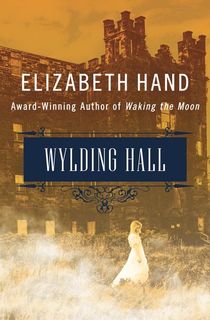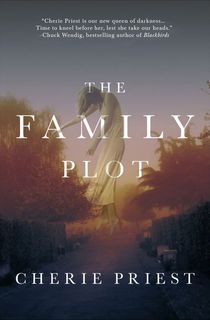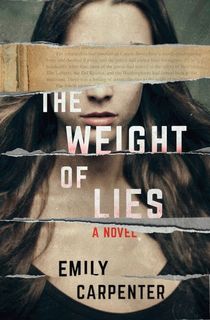Gothic literature was born out of tumultuous times, built upon issues from racial and gender inequality to wealth disparity. With deeply atmospheric settings and secrets that are personified either literally or figuratively by ghosts, this genre has a slow build that gets your heart racing. But just because the genre is old, the books don't have to be.
We are in the midst of a Gothic revival, which may come as no surprise. After all, we ourselves are trapped in flawed, oppressive, and often corrupt systems, with an increasingly skewed balance of power between the “haves” and the “have-nots.” In addition to that, we’ve recently clawed our way out of the peak of a global pandemic, with COVID-19 still lingering on with no clear end in sight. These social and systemic ills and inequities provide ample fodder for mounting anxieties.
All these elements make our current extraordinary times an ideal breeding ground for new Gothic mysteries—tales of decay and opulence, of false veneers and buried secrets, where the past is never past and every house is haunted.
These 12 modern Gothics show that not only is the Gothic revival here to stay—it’s welcome!

The Orphanage by the Lake
Hazel's private investigation business was about to go under, but her fortune turned when wealthy socialite Madeline Hemsley comes asking for her help on a new case. A girl has gone missing from the local orphanage, The Orphanage By The Lake. As Hazel investigates, she soon finds that this mystery runs much deeper than a simple case of a runaway child. Unearthing blood stains, cryptic symbols, and shadowy figures, Hazel will have to question everything she thought she knew about the orphanage… and about Madeline.

Mexican Gothic
With a “spunky female protagonist and an ancient house filled with disturbing secrets,” Silvia Moreno-Garcia’s New York Times bestseller has received praise from fans and critics alike. This modern Gothic classic garnered comparisons to Daphne du Maurier and Guillermo del Toro, not to mention “Jane Eyre, Ann Radcliffe’s The Mysteries of Udolpho, Dracula, Rebecca, and that 1958 classic sci-fi movie, The Blob” (NPR). And if that’s a confusing string of comparisons, we guess you’ll just have to read this story of a glamorous debutante who goes to the dark and mysterious home of her cousin’s new husband to try to rescue her from a dark family secret—now in development as a limited series at Hulu!

Tripping Arcadia
Lena, a med school dropout, is on the hunt for a job—any job at all—to help support her parents. After her father was both injured and laid off, they're heading towards bankruptcy fast. The opportunity to work for one of Boston's most prominent families is almost too good to be true, even if the job description is vague and the interview was beyond peculiar.
Working for the extremely secretive Verdeaus, she assists the family doctor during the day, looking after his sickly and drunken charge, Jonathan. Though he is set to inherit the family empire, he is endlessly difficult, and his illness is bafflingly mysterious. During the night, Lena puts in overtime at the lavish parties held by the family, getting a front-row seat to their dark side as she scrambles to cover up their self-destructive behavior.
Her life becomes more complicated when, first, she starts to develop feelings for Jonathan's captivating sister, Audrey. When she learns that the Verdeau patriarch is at fault for the downfall of her own family, things only get worse. Bent on revenge, Lena sets out on a poisonous journey deeper into the Verdeaus' lavish world.

The Death of Mrs. Westaway
It's just an average day when Hal receives the mysterious letter informing her of a hefty inheritance. Then it's not so typical… When she realizes the letter was meant for someone else, an idea strikes her: she may be able to use her tarot skills to claim the money anyway.
Hal arrives at the funeral of the departed, where she quickly realizes there's something very off about the situation and the unusual inheritance.

On the Cliffs of Foxglove Manor
It's 1885 and Adria Fontaine is on a mission to recover the goods her father pirated during the war. When she arrives at the cliffside Foxglove Manor, however, she can feel an intense wickedness lingering over the estate. The peculiar and vicious lady of the house has stuffed her house with secrets which may well be the end of Adria.
In the present day, senior home nurse's aide Kailey Gibson is haunted by her past. Abducted as a child, her memories are darkened by secrets and death. The cold promise from her kidnappers that they would come back for her one day follows her always. When the seniors at Foxglove start to report strange whispers in the night, tales of a hidden treasure, and a deadly love, Kailey must face the demons, not just from her past, but from Foxglove itself.

No One Gets Out Alive
Recently adapted—with some significant changes—to (digital) celluloid for Netflix, this haunting story by popular British horror author Adam Nevill still has plenty of thrills waiting in its many pages, even for those who have seen the movie. For starters, it’s set in the UK, rather than Cleveland, and the themes of poverty and the exploitation of the working class hit differently as a result. Even for those who aren’t as interested in the book’s themes, however, there’s still plenty to like in the dismally claustrophobic rooming-house setting—and the creepy events that build to a horrific crescendo.

Wylding Hall
From the Shirley Jackson Award-winning author of Generation Loss, this eerie and haunting tale sees a documentary filmmaker reuniting the surviving members of a British acid-folk band to recount the events surrounding the recording of their most famous album, recorded at the ancient country manor of Wylding Hall. As the band members and those closest to them all tell their stories, a tale of something deeply strange within the walls of the eponymous manor house is slowly unraveled, bit by gloriously spooky bit.

The Family Plot
When the family business is stripping and reselling dying historical estates, you don’t look a gift horse in the mouth when a big one is all but dropped in your lap. At least, that’s what Chuck Dutton tells himself when he gets his hands on the massive Winthrow estate in Chattanooga, Tennessee. His daughter Dahlia may not be quite as sanguine about the prospect, but she and a small crew are nonetheless put in charge of the project and begin work on the old, overgrown house, the barn, the carriage house, and an on-site cemetery that wasn’t included in the original paperwork. It seems there are other secrets waiting on the Winthrow property, too. Ones that will keep readers looking over their shoulders in this page-turning southern Gothic.

Kill Creek
Called “a match for readers who enjoy Shirley Jackson’s The Haunting of Hill House” by Booklist, this “meditation on horror itself” (The A.V. Club) from Scott Thomas takes the trappings of the Gothic manor and moves them to the dusty prairie roads of the Kansas countryside. A group of four successful horror writers are invited to spend Halloween night in the supposedly-haunted Finch House, which has stood empty for years. What they find there will scare even them, in this book that Joyce Carol Oates called an “intensely realized and beautifully orchestrated Gothic horror.”

The Weight of Lies
In Emily Carpenter’s metatextual southern Gothic, Meg Ashley agrees to write a tell-all memoir about her own life of privilege and the bestselling horror novel her mother wrote decades ago. As she researches the book, however, she finds that her mother’s story may not have been as fictional as it seems, and finds herself investigating a years-old murder and her own mother’s secret history. Filled with “twists aplenty,” this “searing murder mystery should leave readers dizzy, in the best way possible.” (Kirkus Reviews)

The Broken Girls
“This book has it all, a spooky, ghostly tale, well-crafted characters and a mystery that will keep you turning the pages.” (CrimeReads) In the 1950s, Idlewild Hall was a home for “wayward girls” that was rumored to be haunted. In 1994, the body of Fiona Sheridan’s older sister was found near the overgrown ruins of the property. In 2014, Fiona has returned to Idlewild Hall in search of answers to questions that she can’t even entirely articulate, certain that something has always felt wrong about her sister’s death. As she digs into the history of the place, she will discover secrets that were meant to stay buried forever in this page-turning novel from the New York Times bestselling author.

Catherine House
The prestigious Catherine House school counts among its graduates some of the most important, powerful, and influential people in the world. But admission to the school comes at a price. Students must give the school three years, severing all ties to the outside world during their time within the institute of higher learning. For Ines Murillo, the opportunity initially seems well worth the cost. But once she is locked within the gilded cage of Catherine House, she begins to suspect that something deeply sinister lies behind the veneer of the august school, and that she may not survive to reap the rewards of graduation in this “delicious literary Gothic debut.” (The New York Times Book Review)









